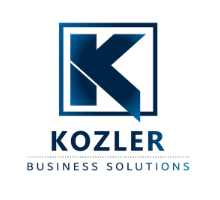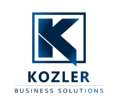How to find or estimate your business figures

July 22, 2022
This guide will help you find or estimate your business figures.
When estimating your business numbers, you want to use known numbers on your financial statements to help make sure estimates are as accurate as possible.
By using numbers you know on your statements like revenue, COGS, gross profit, and net profit. You can ensure that your estimates are as accurate as possible. Until you can set up a system and process to measure your figures accurately.
Existing clients
These are clients that have been doing business with you for longer than 12 months.
You should be able to find this figure in your operating system or CRM. If you don't have access to this information do your best to think about how many sales you get in an average month and what percentage of them are repeat customers to help work out your estimated existing customers.
Retention rate
Retention Rate is the number of clients that have done business with you and have returned. For ideas to improve your retention rate read 24 ways to increase your retention rate.
Example: If you had 1000 clients last year and 600 of them purchase from your business this year that's a retention rate of 60%.
This number can again be stored in your CRM, but if you don't have access to
them, do your best to think about how what percentage of your customers stay around or leave in a 12-month period of time. This could be due to them leaving your local area, going to your competitors, or simply not needing your product or services again.
Leads
Leads are the number of people that entered the consideration stage for your business. Examples include website views, enquires, lead magnet downloads, and store visits. Learn 27 ways to generate more leads for your business.
To find out how many leads your business is receiving in a given period, you should be able to find these numbers in your CRM platform under reporting or analytics —assuming that they have been set up correctly and track all relevant information.
If you don't have a CRM or access to accurate data, you can estimate your business leads by calculating how many leads or enquiries you get on an average day and extrapolate from there.
Example: On average, you get two phone calls, five emails, and three Facebook messages daily from new potential customers/clients. That's ten further enquires a day which is 3650 enquires per year. Remember, these are leads from new customers, not existing customers purchasing again.
Conversion rate
Conversions are the number of leads that convert into paying clients.
Let's say out of the 10 new enquires you get, on average two of them convert to a customer that's a conversion rate of 20%.
Average Transaction Value
This is the average transaction value of a sale in your business. To work this out simply:
Divide annual revenue (found on your P&L statement) by the total number of sales per
year. For example: $1,000,000 (annual revenue) / 10,000 (number of annual
transactions) = $100 (average transaction value).
Average Transactions Per Year
Average transactions per year are just as it sounds; how many transactions does the average client do in 12 months.
To work this out, divide your total transactions by your total unique clients.
Example: If you have a total of 1000 clients for the year and a total of 3000 transactions in the same year, your average number of transactions will be three.
Cost of Goods Sold (COGS)
The Cost of Goods Sold is how much it costs you to buy and sell your product and services. You can find this number on your P&L statement Between Revenue and Gross Profit. Learn how to decrease the cost of goods sold.
Annual Revenue
This is all the money that goes into your business before any expenses or COGS are
taken out. This can generally be found on the top of your P&L statement
Gross Profit
This is your profit before expenses, after taking out your COGS from your revenue. This can be found on your P&L just underneath your COGS.
Net Profit
This is the profit you make after all expenses have been paid. Generally found at the bottom of your P&L.

%20(3).png?width=1080&height=1620&name=Copy%20of%20Business%20success%20mapGrowth%20exploration%20Story%20ads%20(1080%20x%201620%20px)%20(3).png)
